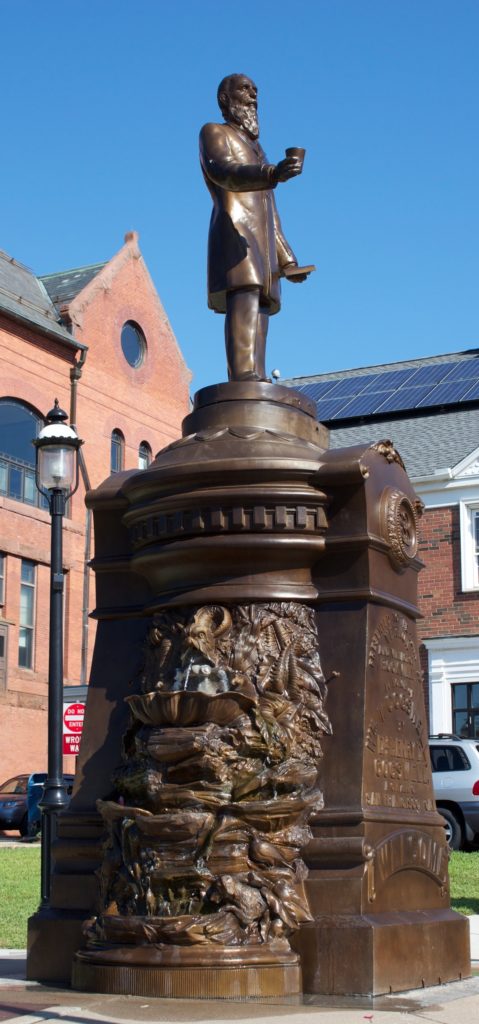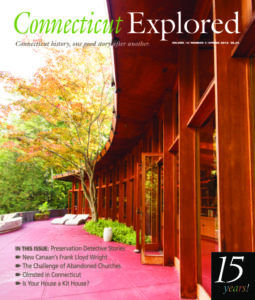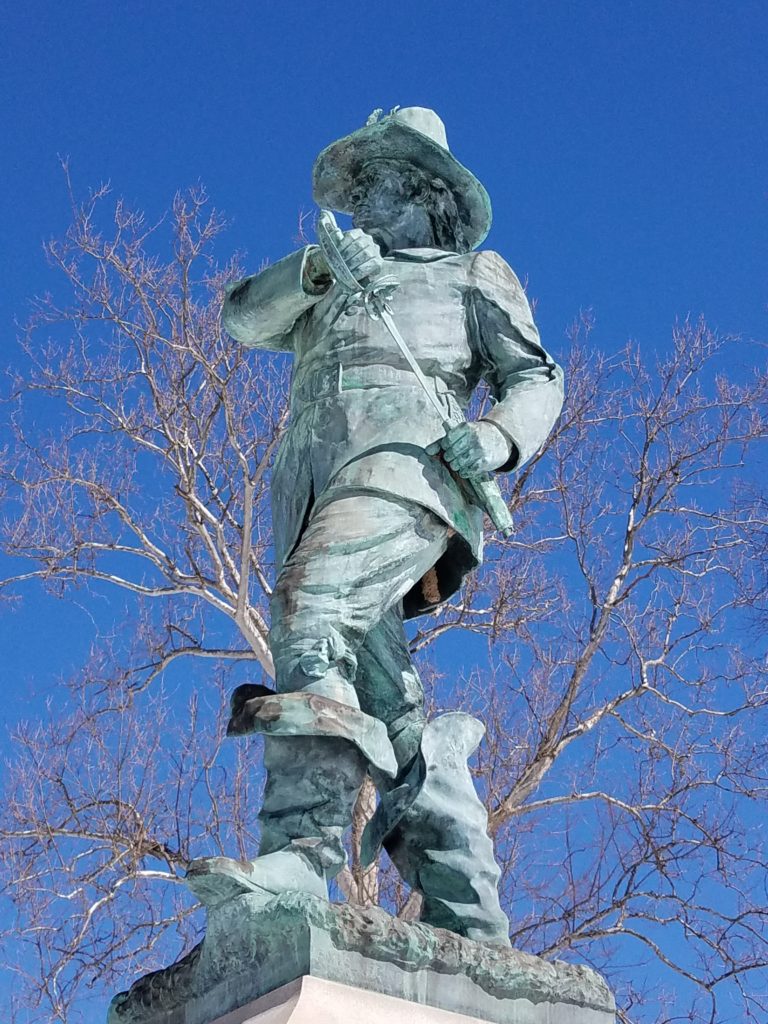(c) Connecticut Explored Inc. Spring 2018
With all the recent talk about removing offensive statues from public view, it is instructive to realize this phenomenon is nothing new. More than one Connecticut statue has a long history of provoking heated controversy and demands for its removal.
Consider, for example, the statue of Major John Mason on Windsor’s historic Palisado Green. Mason, who commanded Connecticut’s troops in the 1637 Pequot War, was venerated for centuries as a Connecticut hero. His statue was commissioned by the state on the 250th anniversary of the Pequot war. It was installed in 1889 at the site of a surprise attack led by Mason near present-day Groton, in which some 400 to 700 Pequot people died. A century later—in 1992—a coalition of Native American groups petitioned to have the statue removed from what they consider sacred ground. Windsor—Mason’s colonial hometown—agreed to take the statue and moved it to its historic green in 1996. Recently, though, Windsor has reconsidered Mason’s role in what is now called the “Mystic Massacre,” and in December 2016 the town council voted to exclude the statue from a list of monuments worthy of restoration. The council also discussed removing it from the green, but finding it was actually owned by the state, they decided to leave it on display—at least for now.
For all its mobility, the M ason statue barely compares with the “Now You See It, Now You Don’t” history of the Cogswell Temperance Fountain, a replica of which is currently on display in Rockville’s Central Park. Dr. Henry Daniel Cogswell, who donated the original statue to the town, was a native of Tolland who had risen from humble beginnings, gone west with the Gold Rush, and through dentistry, mercantile activity, and real-estate development become one of San Francisco’s first millionaires. A passionate temperance advocate, Cogswell believed the cure for alcoholism was abundant supplies of fresh water. He used his fortune to provide public fountains in cities across the country, many with a sculpture of himself atop, glass of water in one hand and temperance pledge in the other. The Rockville fountain, installed in 1883 and made of zinc, was one of 31 such installations nationwide.
ason statue barely compares with the “Now You See It, Now You Don’t” history of the Cogswell Temperance Fountain, a replica of which is currently on display in Rockville’s Central Park. Dr. Henry Daniel Cogswell, who donated the original statue to the town, was a native of Tolland who had risen from humble beginnings, gone west with the Gold Rush, and through dentistry, mercantile activity, and real-estate development become one of San Francisco’s first millionaires. A passionate temperance advocate, Cogswell believed the cure for alcoholism was abundant supplies of fresh water. He used his fortune to provide public fountains in cities across the country, many with a sculpture of himself atop, glass of water in one hand and temperance pledge in the other. The Rockville fountain, installed in 1883 and made of zinc, was one of 31 such installations nationwide.
Cogswell’s statue was now well and truly gone, but it was certainly not forgotten. In 2005, during restoration of Rockville’s Central Park, philanthropist Rosetta Pikat donated $50,000 to have a New York studio create a replica, and amid pomp and circumstance, Henry Cogswell returned to Rockville. Last time I drove through, he was still standing—at least for now.
Walt Woodward is the Connecticut state historian.
Explore!
“Connecticut’s Top 10 Public Sculptures,” Winter 2006/2007
Read more stories about Connecticut’s Art History on our TOPICS page.


